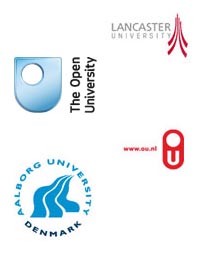

A networked learning-informed investigation of introducing blended simulation based medical education in a UK National Health Service context
Armineh Shahoumian, Gale Parchoma, Maria Zenios, Lancaster University, Lancaster, UK.
Jackie Hanson, Mike Dickinson, Mark Pimblett, Lancashire Teaching Hospitals NHS Trust, Preston, UK
Simulation Based Medical Education (SBME) has received a lot of attention in the past few years for providing medical students and practitioners near real-life opportunities to practice and improve their clinical and non-clinical skills (Issenberg & Scales, 2008) in a relatively risk-free environment, learn from their errors and encounter rare clinical events that they might not experience in an actual clinical environment. SBME has been introduced in medical context as a result of changes in providing health care services, reducing working hours for medical staff, ethical issues in using patients for educational purposes, and reducing unnecessary risks. These changes have resulted in limited patient contact for educational purposes. It has been predicted that SBME "in all its forms will be a vital part of building a safer healthcare system" (Department of Health, 2008, p.55) in near future. A networked learning (NL) approach to blended SBME has been introduced in an innovative NHS simulation centre (SC) in North West England in 2011. This new model replaces existing face-to-face briefing sessions with on-line resources. As per existing practices, following introductory briefings, students and facilitators will continue to engage in simulated clinical procedures and then collaboratively debrief their experiences. SBME attempts to create an authentic context with student-to-student, student-facilitator, and even student-simulated patient social interactions. Student-simulated patient social interactions are mediated by clinical staff 'speaking through' high fidelity mannequins, providing feedback on students' skills, communications and emotions. With the introduction of blended learning students will also have the option to participate in continued reflection in a NL environment. The focus of this on-going case study is to investigate the teaching and learning experiences, perceptions, and challenges that learners and facilitators may confront in the NL environment and provides the opportunity to focus "on the connections between learners, learners and tutors, and between learners and the resources they make use of in their learning" (Jones, et. al, p. 90). Blended SBME has been designed to provide students with flexible and collaborative learning opportunities to prepare themselves for the simulated scenarios, but results from a pilot study suggest this transition may prove challenging in terms of disrupting existing Trust teaching and learning cultures. As situated learning (Lave and Wenger, 1991) and experiential learning (Kolb, 1984) theories underpin SBME literature, both will be examined and critiqued in the NL context over the two-year course of this study.
Keywords
Simulated based medical education, reflection, blended learning, networked learning
| About NLC | Welcome Messages | 2012 Conference Proceedings | Conference Organisation |Invited Speakers |Proceedings Handbook | Past Conference Proceedings | Exploring the Theory, Pedagogy and Practice of Networked Learning |Contact |